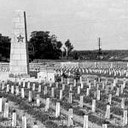0175 Gefallen - Gefangen - Begraben
Kriegsgräberstätten sowjetischer Kriegsgefangener seit 1945
Identifiers (Article)
Identifiers (Files)
Abstract
Until the German reunification, public perception of the graves and cemeteries of Soviet prisoners of war has been rather marginal in both German states, in Europe and in the Soviet Union. Due to Stalinist repression, the names of Russian prisoners of war were intentionally not named; captivity remained a taboo issue in the soviet sphere of control until the collapse of the Soviet Union. During the Cold War, the cemeteries of Russian prisoners of war on the sites of former camps were reshaped and reinterpreted. It is only after the discussions that started in the mid-1990s regarding the participation of the Wehrmacht in war crimes that the graves and cemeteries of Russian prisoners of war are treated in a scholarly way. The article sketches this continuous process in an European context.
Statistics


License

This work is licensed under a Creative Commons Attribution-NonCommercial-NoDerivatives 4.0 International License.



